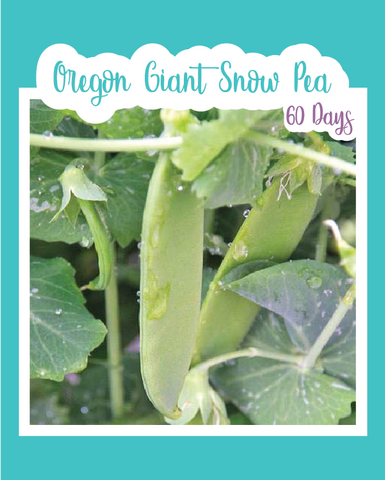
Blue Podded Pea
Seed Count: Approx. 25 seeds
Days to Maturity: 80-85 days
Description: More commonly known as Blauwschokkers, which means blue podded in dutch, the Blue Podded pea is a productive Dutch strain of soup peas. It has been enjoyed as a winter staple in Europe for centuries. They grow on spectacular 5-6 ft. tall plants, and are beautiful enough to grow as an ornamental. They are also quite good immature as an edible podded pea, but are a bit bland and starchy as a fresh shelled pea. It is best used as a dry pea. Soak the dry seeds overnight before cooking.
Mint2Grow Tip: The blue podded pea makes the most delicious soup peas. I've tried it as a snap pea, and well I wasn't as impressed. The shell is a bit tough even when young, so I just wait and shell them. I've never actually eaten these in soup, since they never make it inside of my house. Plus they're absolutely stunning to look at, with the cutest little flowers. I'm sure it would be a great addition to a kids garden. The plants get pretty tall, so a support system is definitely needed. These are not heat tolerant by any means. At the first sign of heat mine died.
How To Grow
Sowing: Because peas thrive in cool weather and do not transplant well, they should be planted outside 4-6 weeks before the last frost or when the average soil temperature reaches at least 40 degrees F. If planting later, remember that most peas won't tolerate weather above 75 degrees F. Plant seeds 2 inches apart and 2 inches deep, in light soil and full sun. They also make for a great fall crop in places with mild temperatures. Peas make great companion plants, but they do not do well when planted near onions or garlic.
Growing: Before they bloom, pea plants need to be kept moist but not wet; after blooming, you should slightly increase their watering. Remove weeds carefully to avoid disturbing the plants; mulch may be helpful to conserve moisture and control weeds. This pea makes a long vine and will require support.
Harvesting: Snap peas taste best when harvested as soon as they reach their mature length, but before the peas inside have fully developed. Check the pods often for the best results. Shelled peas generally taste best when harvested as soon as the pods have filled out, but before they reach their full size. Remove even the pods that have passed their prime, since old pods left on the vines will stop the production of new pods. To save seeds from peas, let the pods mature fully on the vine; they will turn brown, and the peas should rattle inside when they have fully dried. If wet conditions threaten, pull the entire plant and hang it upside down in a warm, dry location to finish drying. Shell the peas after 1-2 weeks of drying, and store the seed in a cool, dry place for up to three years.




